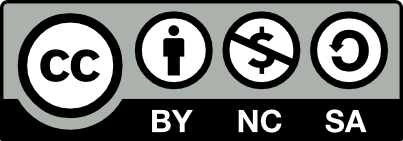Development of a method for determining xenobiotics in the form of dried blood spots on cotton material and Whatman® 903 cards
Choose format
RIS BIB ENDNOTEPublication date: 03.03.2025
Archives of Forensic Medicine and Criminology, 2024, Vol. 74 (4), pp. 296-307
https://doi.org/10.4467/16891716AMSIK.24.023.21222Authors
Cel pracy: Celem niniejszej pracy było opracowanie i zwalidowanie procedury analizy ilościowej dla czterech związków z grupy benzodiazepin (alprazolam, diazepam, flunitrazepam, klonazepam) oraz jednego leku z grupy Z-drugs (zolpidem), naniesionych na materiał bawełniany oraz karty Whatman® 903 w postaci plam krwi.
Materiały i metody: Ekstrakcję przeprowadzono przy pomocy mieszaniny buforu fosforanowo-węglanowego ph=6, acetonitrylu i metanolu. Plamy krwi analizowano z wykorzystaniem wysokosprawnej chromatografii cieczowej sprzężonej ze spektrometrią mas typu potrójny kwadrupol.
Wyniki: Wszystkie krzywe kalibracyjne zachowały liniowość R2>0,995 w zakresach stężeń 1-50 ng/ml na materiale bawełnianym oraz kartach Whatman® 903. LOD (z ang. Limit of detection) oraz LOQ (z ang. Limit of quantitation) dla analizowanych substancji mieściły się w zakresach: 0,04-0,40 ng/ml (LOD) i 0,12-1,08 ng/ml (LOQ) izolowanych z kart Whatman® 903 oraz 0,06-1,15 ng/ml (LOD) i 0,17-2,04 ng/ ml (LOQ) izolowanych z bawełny. Dokładność dla stężeń 5 ng/ml, 10 ng/ml oraz 50 ng/ml była porównywalna w obu grupach i wynosiła 76-101% dla kart Whatman® 903 oraz 73-117% dla bawełny. Nie wykazano znaczącego wpływu matrycy na ilościowy wynik analizowanych benzodiazepin.
Wnioski: W przedstawionym badaniu opracowano oraz zwalidowano procedurę analizy jakościowej oraz ilościowej czterech ksenobiotyków z grupy benzodiazepin oraz zolpidemu, naniesionych, jako suche plamy krwi na materiał bawełniany i karty Whatman® 903. Przedstawiona metoda ekstrakcji skupiała się na izolacji ksenobiotyków z plam krwi o znanej objętości. Ekstrakcja próbek przy pomocy prostej techniki LLE (z ang. Liquid–liquid extraction) stwarza możliwości zastosowania opisanej metody do rzeczywistych próbek zabezpieczonych na materiale bawełnianym lub przechowywanych na kartach Whatman® 903.
Grela A, Gautam L, Cole MD. A multifactorial critical appraisal of substances found in drug facilitated sexual assault cases. Forensic Sci Int. 2018;292:50-60
Richer LA, Fields L, Bell S, et al. Characterizing Drug-Facilitated Sexual Assault Subtypes and Treatment Engagement of Victims at a Hospital-Based Rape Treatment Center. J Interpers Violence. 2017;32(10):1524-1542
Bertol E, Di Milia MG, Fioravanti A, et al. Proactive drugs in DFSA cases: Toxicological findings in an eight-years study. Forensic Sci Int. 2018;291:207-215
Anderson LJ, Flynn A, Drummer O, Gerostamoulos D, Schumann JL. The role of voluntary and involuntary drug and alcohol consumption and premorbid mental health factors in drug-facilitated sexual assault. Forensic Sci Med Pathol. 2019;15(3):382-391
Pérez Orts M, van Asten A, Kohler I. The Evolution Toward Designer Benzodiazepines in Drug-Facilitated Sexual Assault Cases. J Anal Toxicol. 2023;47(1):1-25
Majda A, Wietecha-Posłuszny R, Świądro M, Mrochem K, Kościelniak P. Dried blood spots sampling in case samples deprived of hematocrit level information – Investigation and calculation strategy. J Chromatogr B Analyt Technol Biomed Life Sci. 2019;1124:308-312
Musshoff F, Padosch S, Steinborn S, Madea B. Fatal blood and tissue concentrations of more than 200 drugs. Forensic Sci Int. 2004;142(2-3):161-210
Matuszewski BK, Constanzer ML, Chavez-Eng CM. Strategies for the assessment of matrix effect in quantitative bioanalytical methods based on HPLC-MS/MS. Anal Chem. 2003;75(13):3019-3030
Odoardi S, Anzillotti L, Strano-Rossi S. Simplifying sample pretreatment: application of dried blood spot (DBS) method to blood samples, including postmortem, for UHPLC-MS/MS analysis of drugs of abuse. Forensic Sci Int. 2014;243:61-67
Thompson KS, Lewis RJ, Ritter RM. Analysis of zolpidem in postmortem fluids and tissues using ultra-performance liquid chromatography-mass spectrometry. J Anal Toxicol. 2014;38(8):507-512
Smink BE, Lusthof KJ, de Gier JJ, Uges DR, Egberts AC. The relation between the blood benzodiazepine concentration and performance in suspected impaired drivers. J Forensic Leg Med. 2008;15(8):483-488
Barr DB, Kannan K, Cui Y, et al. The use of dried blood spots for characterizing children’s exposure to organic environmental chemicals. Environ Res. 2021;195:110796
Guo C, Yan H, Liu W, Xiang P, Di B, Shen M. Liquid chromatography with tandem mass spectrometric method for determination of drugs and poisons in dried blood spots and application to forensic cases. Forensic Toxicol. 2023;41(2):241-248
Wang Y, Shi Y, Yu Y, et al. Screening of Synthetic Cathinones and Metabolites in Dried Blood Spots by UPLC-MS-MS. J Anal Toxicol. 2021;45(7):633-643
Tretzel L, Thomas A, Geyer H, Pop V, Schänzer W, Thevis M. Dried blood spots (DBS) in doping controls: a complementary matrix for improved in- and out-of-competition sports drug testing strategies. Analytical Methods. 2015; 7(18), 7596–7605
Protti M, Mandrioli R, Mercolini L. Perspectives and strategies for anti-doping analysis. Bioanalysis. 2019;11(3):149-152
Ambach L, Hernández Redondo A, König S, Weinmann W. Rapid and simple LC-MS/MS screening of 64 novel psychoactive substances using dried blood spots. Drug Test Anal. 2014;6(4):367-375
Sadler Simões S, Castañera Ajenjo A, Dias MJ. Dried blood spots combined to an UPLC-MS/MS method for the simultaneous determination of drugs of abuse in forensic toxicology. J Pharm Biomed Anal. 2018;147:634-644
Adamowicz P, Ziora B. Can scene bloodstains be used to quantify drug concentration at the moment of injury? Forensic Sci Int. 2022;341:111498
Information: Archives of Forensic Medicine and Criminology, 2024, Vol. 74 (4), pp. 296-307
Article type: Original article
Titles:
Chair and Department of Forensic Medicine,
Medical University of Lublin
Poland
Chair and Department of Forensic Medicine,
Medical University of Lublin
Poland
Published at: 03.03.2025
Received at: 03.05.2024
Accepted at: 03.11.2024
Article status: Open
Licence: CC-BY-NC-SA

Percentage share of authors:
Article corrections:
-Publication languages:
Polish, EnglishView count: 106
Number of downloads: 68